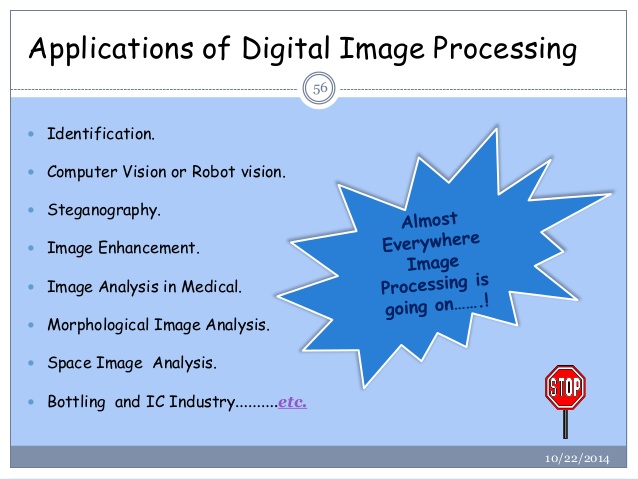Applications of Digital Image Processing in the Electromagnetic Spectrum
Digital image processing can be categorized into applications based on the sources of the images used. The primary source for images is the Electromagnetic Spectrum. Secondary sources 2 include ultrasonic, acoustic, electronic, and synthetic images. The following section elaborates on the applications of digital image processing across the Electromagnetic Spectrum.
Gamma Ray Imaging
Images from gamma ray sources are applied in fields such as nuclear medicine and astronomy. In the field of nuclear medicine, it is utilized for gamma ray detection. This method involves injecting patients with a radioactive isotope and forming images from the radioactive emissions given out from the patient’s body. The images are formed with the help of a gamma ray detector. Figure 1 illustrates an example of gamma ray imaging in a patient’s body. The figure depicts the localization of radioactivity in the body.
![FIGURE 1. Gamma ray imaging [1].](https://matlab1.com/wp-content/uploads/2017/11/Untitled-7-1.jpg)
FIGURE 1. Gamma ray imaging [1].
emitted from celestial bodies is captured and analyzed.
X-Ray Imaging
X-ray imaging is applied in the field of medical diagnostics and astronomy. In medical diagnostics, a patient is made to pass between an X-ray tube and an X-ray sensitive film. As the patient passes through the tube, the X-ray intensity gets modified due to absorption by the patient’s body, and the resulting energy gets absorbed onto the film. Another medical application is angiography, where an X-ray contrast medium is injected into a patient’s body with the help of a catheter. The medium helps to bring out contrasts in the blood vessels of the patient and helps to detect any irregularities or blockages in the blood vessels. Computerized Axial Tomography also utilizes X-ray imaging. The basic technique involves producing longitudinal images of the patient’s body and then stitching them together to form a three-dimensional rendition of the patient’s interior.
Ultraviolet Band Imaging
Ultraviolet band imaging is utilized with a variety of techniques in fields such as microscopy, laser treatments, industrial inspection, biological imaging, lithography, and astronomical observations. Fluorescence microscopy involves colliding an electron in an atom of a fluorescent material with ultraviolet radiation. After the collision, the excited electron returns to its normal state by emitting light in the form of a low energy photon in the visible (red) light region. These excited fluorescent areas are caught against a dark background by the detector. This method can be used to detect abnormalities in the observed species. Figure 2 illustrates an example of fluorescence microscopy as seen in a corn species. Figure 2 (a) depicts a normal corn species, and Figure 2 (b) displays a corn species infected with smut disease.
Visible and Infrared Band Imaging
Visible band imaging has many applications as compared to other bands in the Electromagnetic Spectrum because the visible band is used in human eyesight. Application areas include astronomy, manufacturing, remote sensing, light microscopy, and law enforcement Light microscopy is utilized in fields such as micro-inspection, material characterization, and pharmaceuticals productions. Remote sensing uses images that are obtained from both the visible and infrared bands. For example, Landsat from the National Aeronautics and Space Corporation is used for satellite imagery of the Earth . The images obtained from satellites have applications in regional planning, forestry, agriculture, geology, and forestry.

FIGURE 2. Fluorescence microscopy depicted in a corn species
Multispectral images from satellites have applications in weather prediction and observation.

FIGURE 3. A multispectral image of Hurricane Andrew

FIGURE 4. An example of automatic license plate recognition.
Microwave Band Imaging
This band has major applications in radar imaging. In radar applications, information acquisition is independent of weather and lighting conditions. Radar waves can travel through environments such as dry sand, vegetation, and ice, making them useful in accessing otherwise inaccessible regions of the Earth’s surface. Radar imaging emits microwave radiations on the subject and captures the reflected waves with a radar antenna. An image is formed by collecting and joining these reflected waves. The image caught by the antenna is processed by a digital computer. Figure 5 illustrates a radar image of the Kathmandu region in Nepal uplifted five feet by the Gorkha Earthquake , captured by the National Aeronautics and Space Administration.
Radio Band Imaging
Radio band imaging has major applications in the fields of medicine and astronomy. In the medical field, it is utilized in Magnetic Resonance Imaging. This technique involves placing the patient inside a powerful magnetic field . Radio waves are then passed through the patient’s body in short pulses.

FIGURE 5. Radar image of Kathmandu, Nepal
The patient’s tissues then reflect back responding pulses. The strengths of the pulses emitted from various sections of the body have varying intensities. The pulses are analyzed by a digital computer for their strength, and a two-dimensional picture of a section of the patient’s body is formed by the computer. Magnetic Resonance Imaging can produce pictures in any plane.

